Another Google Alert: (To those who don't know, Google has a feature wherein they alert you if your name is mentioned in the internet - that would be publications,news, blogs, etc.)
Country Cooking
Quietly promoting Filipino cooking
By Micky Fenix
Philippine Daily Inquirer
First Posted 16:15:00 12/24/2008
Filed Under: Lifestyle & Leisure, Food
IT was also her matter-of-fact manner of doing her daily cooking chore that taught me to do what I’m supposed to do the best way I can, but quietly.
This column may be regarded as not really a quiet way to accomplish my advocacy—to make the cooking of our country known to compatriots as well as to the world in general. But it is working quietly in the sense that the effort is done with countless others but isn’t organized. All of us go about the task in our own way whether in writing or in cooking.
Some of those like-minded people were at the launch of the book “Kulinarya: A Guidebook to Philippine Cuisine.” In the program they were cited for promoting Filipino cooking, many of them at their restaurants, proving that serving our dishes is a viable business.
Among those was Nora Villanueva Daza, acknowledged to be the first multimedia culinary personality (print, TV, radio) and the first restaurateur to bring our cooking to Europe.
Aux Iles Philippines was established by Nora Daza in Paris in the early 1970s. That is a wonder considering how Asian ingredients weren’t available everywhere as they are now. And it was a fine dining place, not a carinderia or turo-turo which was the way restaurants serving Filipino food was always presented during that time and even up to the 1990s.
Daza likes to point out the restaurant had an indoor garden which was very unusual for a Paris restaurant at the time. Her food also merited high honors in the French Michelin Guide as well as in the Gault-Millau Le Guide de Paris.
Among her accomplishments, Daza seemed proudest of Aux Iles Philippines as she told her guests at the party celebrating her 80th birthday attended by many of her friends and relatives who shared their experiences about her as neighbor, workmate, mother, grandmother, mother-in-law, ninang.
Many of us who work to have our food known don’t have such a grand operation as Aux Iles Philippines. Yet little by little we let the world sit up and take notice. Thanks to Gourmand World Cookbook Award winners like Felice Sta. Maria’s “The Governor General’s Kitchen,” Cecilia Manguerra Brainard and Marily Orosa’s “A la Carte: Food and Fiction,” and a book I’m proud to be a part of, “Foodlore and Flavours: Inside the Southeast Asian Kitchen” edited by Tan Su Lyn.
Thanks also to “Memories of Philippine Kitchens” by Amy Besa and Romy Dorotan that won the prestigious Grigson Award, the most coveted prize at the International Association of Culinary Professionals convention.
Little by little the efforts to promote our cooking are bearing fruit. Take a look at the December issue of Saveur, one of the best culinary magazines in the United States, where Christmas in Pampanga was a feature story. This was written by Robin Eckhardt who tapped her friend Marc Medina to show her the holiday feasting and simple pleasures at his family’s Mt. Arayat home.
Street food
My piece on street food produced e-mails that complained about my using the word “dirty” for local ice cream. One said that for someone who promoted local cooking, the term was derogatory to the industry.
I forgot that not all readers are of my generation, a group that isn’t classified alphabetically (as in X, Y, Z) but can be described in polite terms as “of a certain age.”
And one reader reminded me that the Internet version of this column is read also by non-Filipinos who might take the “dirty” description literally.
So let me put “dirty” in context. The women of my generation who studied in Catholic schools regard the word with some fondness because it reminds us of our colegiala years when the nuns’ pronouncements were infallible.
“Dirty” was how the nuns called ice cream produced by small outfits, some just home-based, because they presumed that the process may not be as hygienic as those produced by big corporations.
But “dirty” couldn’t kill my love for local ice cream. I never pass up the chance of buying whenever a cart is encountered.
There was an unforgettable incident where I was admonished by my mother, a colegiala herself, about buying from the ice-cream man outside the house. She said something bad would happen.
I presumed she meant a bum stomach or something like that. I laughed that off and bought two cones as my husband also loves the stuff.
On the first lick the earth shook. It was the earthquake that destroyed much of Baguio. I couldn’t believe that my mother was right again.
Thank you readers for reminding me how I have to think and write for a global audience.
E-mail pinoyfood04@yahoo.com.
Wednesday, December 24, 2008
A La Carte mentioned in Philippine Daily Inquirer
Labels:
A La Carte,
Filipino recipes food,
food
 Cecilia Manguerra Brainard's official website is ceciliabrainarddotcom. She is the award-winning author and editor of 22 books, including When the Rainbow Goddess Wept, The Newspaper Widow, Magdalena, Selected Stories, Vigan and Other Stories, and more. She edited Growing Up Filipino 1, 2, & 3, Fiction by Filipinos in America, Contemporary Fiction by Filipinos in America, and other books..
Her work has been translated into Finnish and Turkish; and many of her stories and articles have been widely anthologized.
Cecilia has received many awards, including a California Arts Council Fellowship in Fiction, a Brody Arts Fund Award, a Special Recognition Award for her work dealing with Asian American youths, as well as a Certificate of Recognition from the California State Senate, 21st District, and the Outstanding Individual Award from her birth city, Cebu, Philippines.
She has lectured and performed at UCLA, USC, University of Connecticut, University of the Philippines, PEN, Shakespeare & Company in Paris, and many others. She has served in the Board of literary arts groups such as PEN, PAWWA (Pacific Asian American Writers West), among others.
Cecilia Manguerra Brainard's official website is ceciliabrainarddotcom. She is the award-winning author and editor of 22 books, including When the Rainbow Goddess Wept, The Newspaper Widow, Magdalena, Selected Stories, Vigan and Other Stories, and more. She edited Growing Up Filipino 1, 2, & 3, Fiction by Filipinos in America, Contemporary Fiction by Filipinos in America, and other books..
Her work has been translated into Finnish and Turkish; and many of her stories and articles have been widely anthologized.
Cecilia has received many awards, including a California Arts Council Fellowship in Fiction, a Brody Arts Fund Award, a Special Recognition Award for her work dealing with Asian American youths, as well as a Certificate of Recognition from the California State Senate, 21st District, and the Outstanding Individual Award from her birth city, Cebu, Philippines.
She has lectured and performed at UCLA, USC, University of Connecticut, University of the Philippines, PEN, Shakespeare & Company in Paris, and many others. She has served in the Board of literary arts groups such as PEN, PAWWA (Pacific Asian American Writers West), among others.
Subscribe to:
Post Comments (Atom)









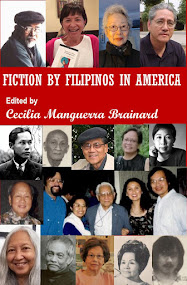



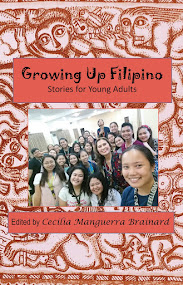
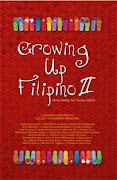


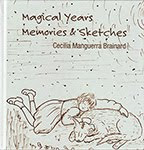


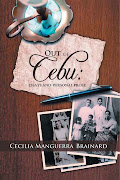





No comments:
Post a Comment